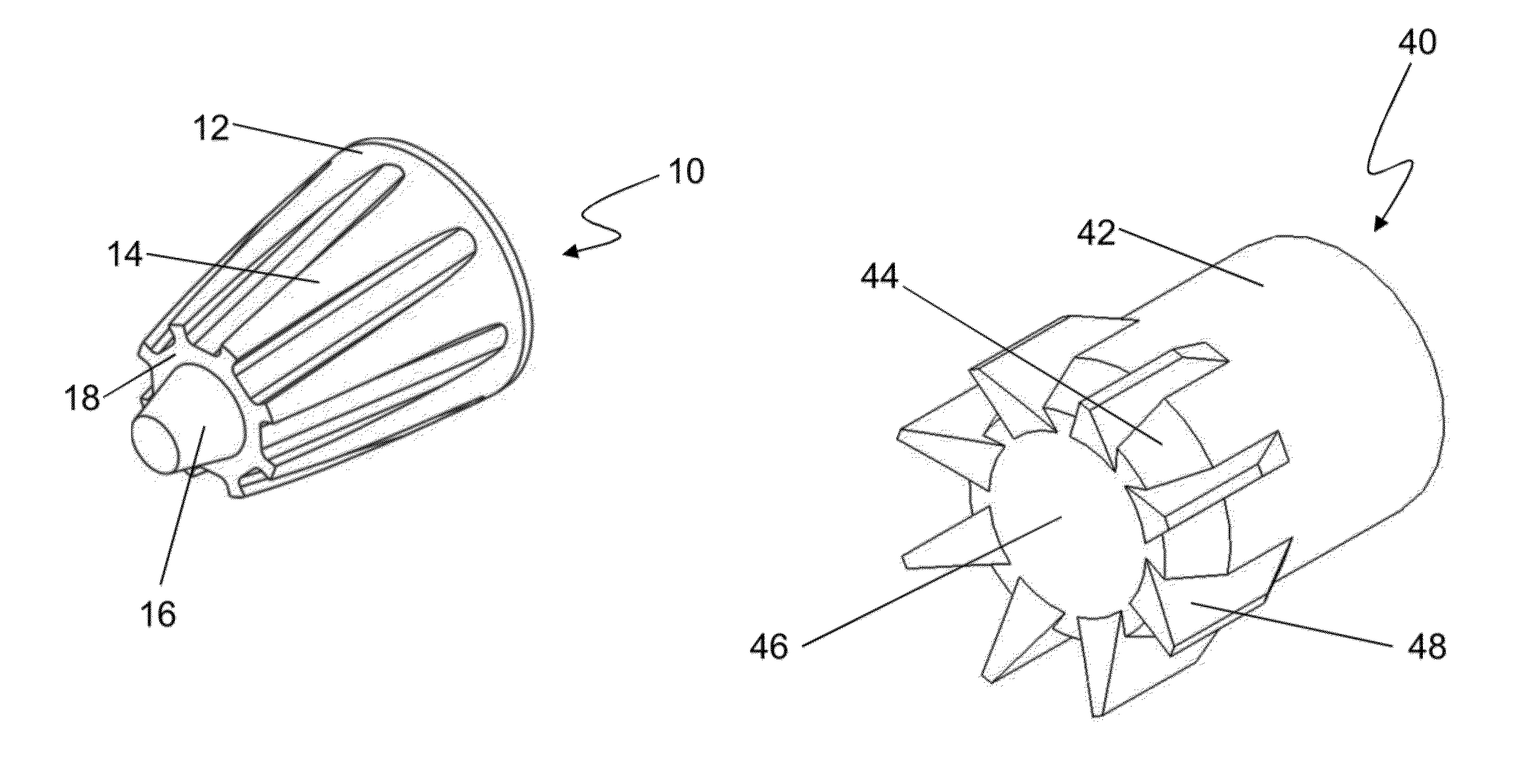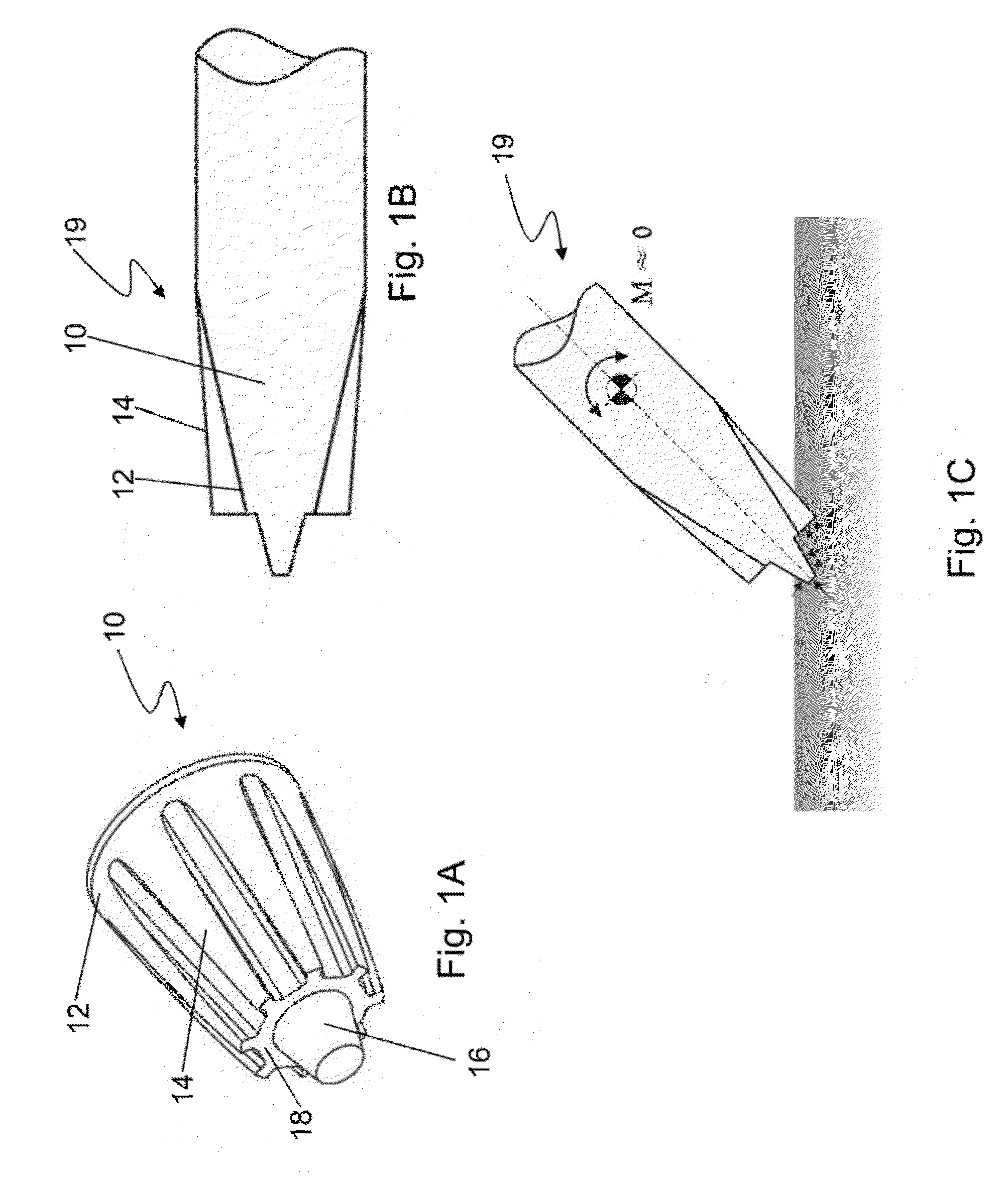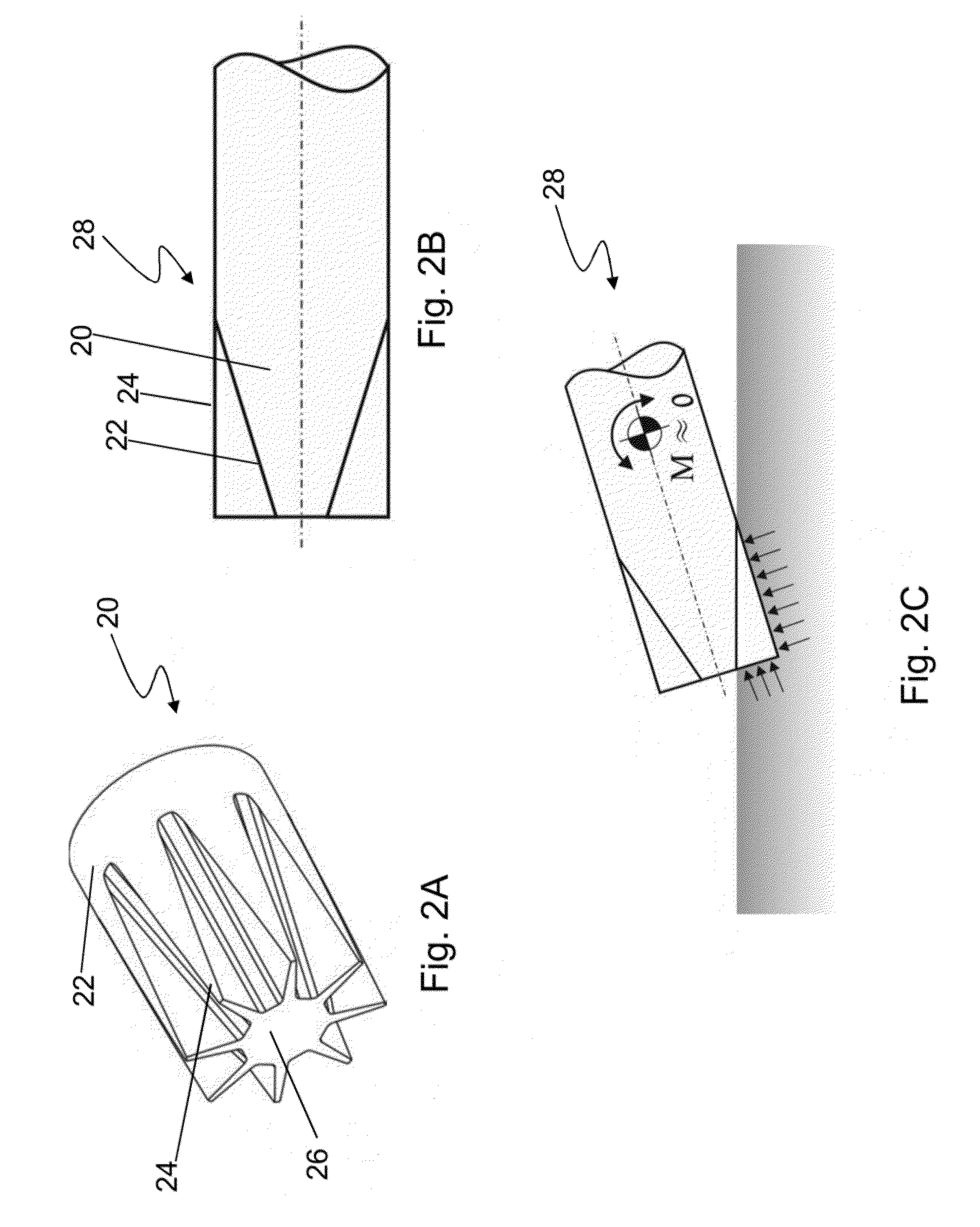Missile warhead
a technology of missiles and warheads, applied in the field of missile warheads, can solve the problems of warheads moving in bent lines instead of straight lines, failure of the fuse during penetration, increase in the weight of the weapon system, etc., and achieve the effect of decreasing acceleration and decreasing the load of the penetration fus
- Summary
- Abstract
- Description
- Claims
- Application Information
AI Technical Summary
Benefits of technology
Problems solved by technology
Method used
Image
Examples
second embodiment
[0078]FIG. 2A is a perspective view of a warhead nose 20 in accordance with the present invention. Warhead nose 20 has a relatively short conical body 22, relatively thin ribs 24 along the outer surface of the conical body 22, and a flat tip 26. Ribs 24 are relatively thin to allow penetration into and splitting of the target material without bouncing from the target surface.
[0079]As seen in FIG. 2A, nose 20 has a conical body 22, however, the structural profile of the nose 20 together with the ribs 24 is not of a cone, but of a non-solid cylinder which results from the shape and width of the ribs 24.
[0080]FIG. 2B is a cross sectional side-view of a warhead 28 having the warhead nose 20 of FIG. 2A.
[0081]As can be seen in the figure, unlike the tapered cross section of nose 10, nose 20 has a rectangular cross section.
[0082]FIG. 2C illustrates the warhead of FIG. 2B at an initial stage of penetration at a relatively low strike angle of between 0° to 45° relative to the plane of the ta...
fourth embodiment
[0084]FIG. 4 is a perspective view of a warhead nose 40 in accordance with the present invention. The body of warhead nose 40 includes a relatively long cylindrical section 42 and a relatively short conical section 44 with flat tip 46. Warhead nose 40 contains ribs 48 partially extending from the outer surface of the cylindrical section 42 and partially from the conical section 44. The outer circumference of the nonsolid cylinder created by the ribs is wider than the circumference of the cylindrical body 42 of the nose 40. In this case, the protruding ribs create a non-solid cylindrical shape the diameter of which is greater than the actual diameter of the cylindrical section of the warhead. This design keeps the warhead from bouncing off the target surface when the warhead is installed in the missile, in a sub-caliber configuration (the warhead is an internal part of the missile), when relatively shallow strike angles (0 to 45) are reached. The ribs are first to hit the target and ...
PUM
 Login to View More
Login to View More Abstract
Description
Claims
Application Information
 Login to View More
Login to View More - R&D
- Intellectual Property
- Life Sciences
- Materials
- Tech Scout
- Unparalleled Data Quality
- Higher Quality Content
- 60% Fewer Hallucinations
Browse by: Latest US Patents, China's latest patents, Technical Efficacy Thesaurus, Application Domain, Technology Topic, Popular Technical Reports.
© 2025 PatSnap. All rights reserved.Legal|Privacy policy|Modern Slavery Act Transparency Statement|Sitemap|About US| Contact US: help@patsnap.com



